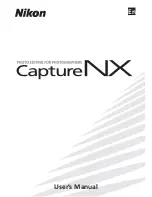
Preface
Web Browser Interface User’s Guide Overview
Page 8
Page 8
Web Browser Interface User’s Guide Overview
The Web Browser Interface User’s Guide provides the following sections:
•
Section 1,“Getting Started”
— Provides information for using the Embedded Web Management System,
including adding, editing, and deleting configurations.
•
Section 2, “Defining System Information”
— Provides information for defining basic device information.
•
Section 3, “Configuring Internet Protocol Version 6”
— Provides information for configuring IPv6.
•
Section 4
,
“Configuring System Time”
— Provides information for configuring Daylight Savings Time and
Simple Network Time Protocol (SNTP).
•
Section 5, “Configuring Device Security”
— Provides information for configuring both system and network
security, including traffic control, and switch access methods.
•
Section 6, “Configuring DHCP Snooping”
— Provides information for configuring DCHP Snooping.
•
Section 7,
“Configuring Ports”
— Provides information for configuring ports, port aggregation, port
mirroring and LACP.
•
Section 8,
“Configuring Interfaces”
— Provides information for defining ports, LAGs, and VLANs.
•
Section 9,
“Configuring System Logs”
— Provides information for setting up and viewing system logs, and
configuring switch log servers.
•
Section 10, “Configuring Spanning Tree”
— Provides information for configuring Classic, Rapid, and
Multiple Spanning Tree.
•
Section 11,
“Configuring Multicast Forwarding”
— Provides information for configuring both the static and
dynamic forwarding databases.
•
Section 12, “Configuring SNMP”
— Provides information for configuring SNMP access and management.
•
Section 13, “Configuring Power Over Ethernet”
— Provides information for configuring Power over
Ethernet (PoE) on the device.
•
Section 14,
“Configuring Services”
— Provides information for configuring Quality of Service CoS
parameters.
•
Section 15,
“System Utilities”
— Provides information for managing system files.
•
Section 16, “Viewing Statistics”
— Provides information about viewing device statistics, including Remote
Monitoring On Network (RMON) statistics, and device history events.
•
Section 17,
“Managing Stacking”
— Provides information for stacking, including a stacking overview.
•
Appendix A, “Downloading Software with CLI”
— Provides information for downloading device software
through the command line interface.
•
Appendix B, “System Defaults”
— Provides the device defaults.
Intended Audience
This guide is intended for network administrators familiar with IT concepts and terminology.









































